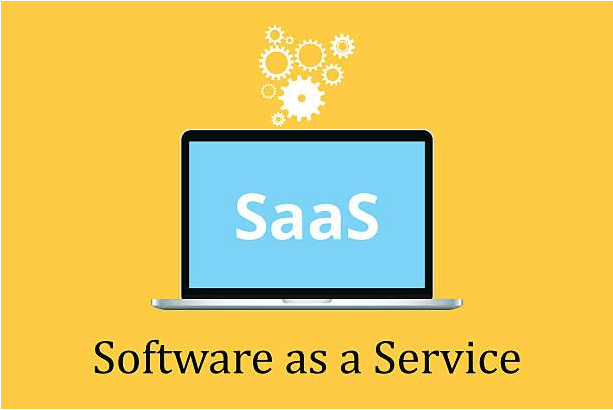Software as a Service (SaaS), which offers cloud-based software solutions that enable flexibility, scalability, and cost-effectiveness, has completely changed the way organizations function.
To ensure effective deployment and leverage the advantages of this model, as SaaS continues to gain popularity, businesses need to embrace best practices. In this post, we’ll look at some of the top recommendations for using SaaS, from choosing a provider to user onboarding and security issues.
What is Software-as-a-Service Architecture?
Software-as-a-Service (SaaS) architecture describes the layout and organization of a cloud-based program that is made available to consumers online. In the SaaS model, a service provider is in charge of centrally hosting and managing the software and is also in charge of its upkeep, upgrades, security, and availability.
Best Practices for Software-as-a-Service (SaaS) Implementation and Adoption
Define your requirements and evaluate vendors
Before choosing a SaaS provider, it’s crucial to describe your organization’s needs precisely and compare different providers using those criteria. Think about elements like functionality, scalability, dependability, data security, integration potential, and pricing structures. To evaluate the vendor’s products and suitability for your company’s needs, take advantage of free trials, demos, and client references.
Ensure data security and compliance
Data security should be a key issue when using SaaS solutions since data breaches are becoming more frequent. Make that the SaaS provider you choose adheres to industry standards for data protection, such as encryption, access limits, and regular security assessments. If applicable to your business, make sure they abide by relevant laws like the General Data Protection Regulation (GDPR) or the Health Insurance Portability and Accountability Act (HIPAA).
Plan for integration and interoperability
It’s common for SaaS solutions to require integration with an organization’s already-existing systems and operations. The SaaS solution must be able to interface easily with your present infrastructure, therefore evaluate the vendor’s integration skills. Consideration of application programming interfaces (APIs), webhooks, or other integration techniques may be required in this case. Business processes will be streamlined and productivity will be increased through seamless integration.

Establish a robust user training and support system
Effective end-user support and training are necessary for SaaS adoption. To acquaint personnel with the new program, its features, and its functioning, hold thorough training sessions. Encourage the use of training materials offered by the vendor, such as webinars, tutorials, and documentation. Establish a support system as well to deal with any queries or problems that may come up during implementation or usage. The user experience and overall adoption can be greatly improved by educated and helpful support staff.
Monitor performance and optimize usage
Monitor your SaaS solution’s performance often to see any bottlenecks or potential improvement areas. Utilize the vendor’s analytics and reporting tools to monitor usage, gauge key performance indicators (KPIs), and spot possible improvement opportunities. Make sure the SaaS solution continues to satisfy your organization’s changing demands by periodically reviewing and analyzing these KPIs. Find chances to make the most of new features, streamline procedures, or alter setups.
Foster collaboration and communication
Regardless of the geographical locations of employees, SaaS solutions frequently offer cooperation and communication. The software’s collaboration tools, including task management, instant chat, and real-time document sharing, should be promoted to staff members. This encourages effective cooperation, raises productivity, and dissolves organizational silos. Promote the usage of SaaS solutions as part of your company culture and make sure that your staff is aware of the advantages these tools provide.
Stay updated and negotiate flexible contracts
With frequent additions of new features, upgrades, and price structures, the SaaS market is continuously changing. Keep up with the most recent developments, trends, and security procedures in the SaaS sector. Make sure your SaaS contracts are up to date with your organization’s changing demands by reviewing them from time to time. Contracts should be flexible enough to support future adjustments to your consumption demands, price structure, or integration requirements. With this adaptability, you’ll be able to work well with your SaaS vendor and adjust to changing conditions.
Frequently Asked Questions
Can SaaS architecture support multi-tenancy?
Yes. Multi-tenancy is a crucial component of SaaS architecture. While providing data segregation and privacy between various businesses or individuals, SaaS applications are made to service numerous clients (tenants) using a common infrastructure.
What are the benefits of SaaS architecture?
Reduced upfront expenses, scalability, flexibility, automated upgrades, faster accessibility, and streamlined maintenance and support are just a few advantages of SaaS design.
Is SaaS architecture secure?
If the service provider uses the proper security precautions, SaaS architecture can be secured. This involves adhering to industry norms and laws, access limits, routine security audits, and data encryption. It’s crucial to select a trustworthy SaaS company that places a high priority on data protection.
Conclusion
Increased flexibility, scalability, and cost-effectiveness are just a few advantages that firms may get by using Software-as-a-Service (SaaS) solutions. However, following best practices during the implementation and usage processes is necessary for a successful SaaS adoption.
